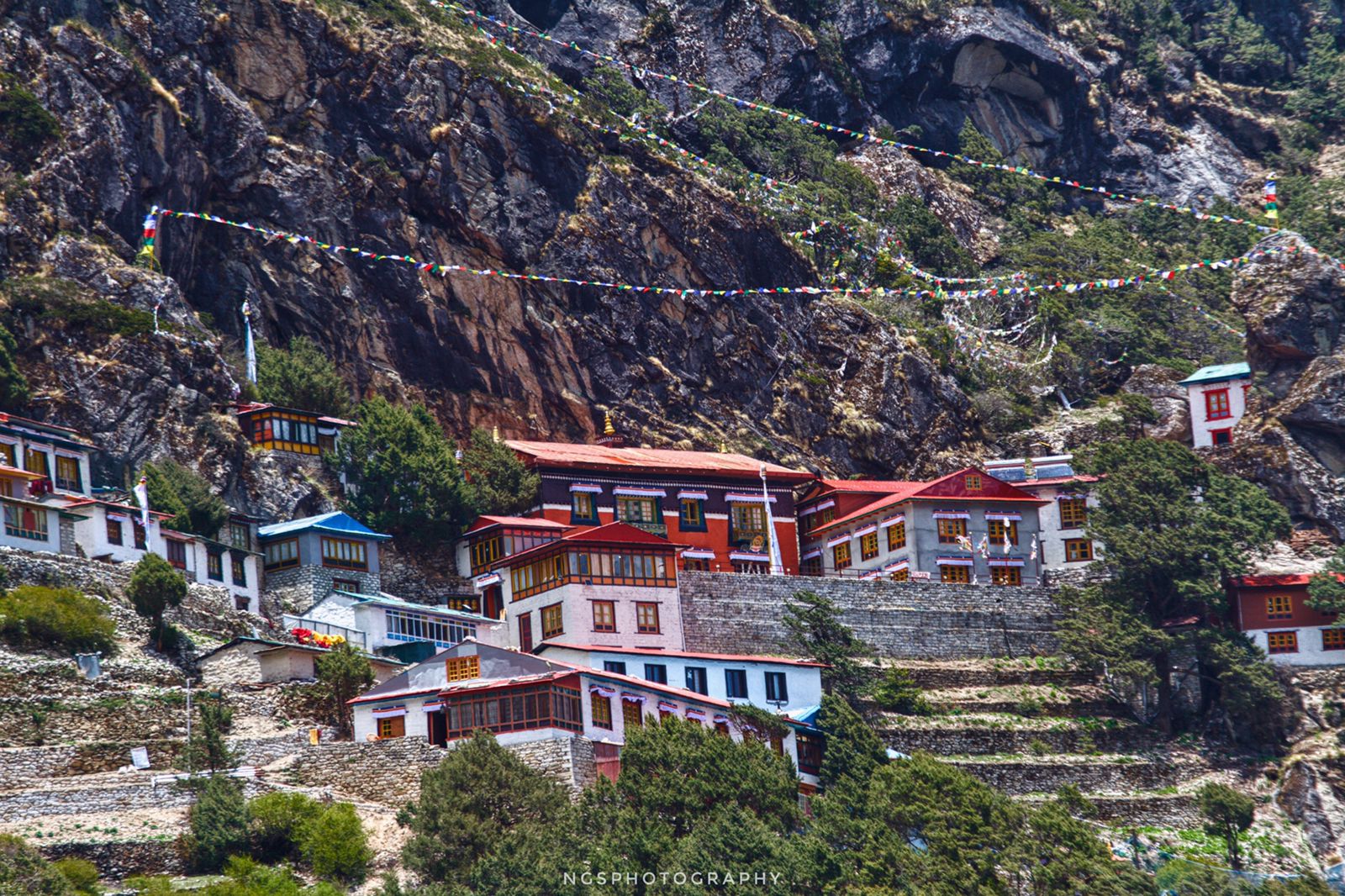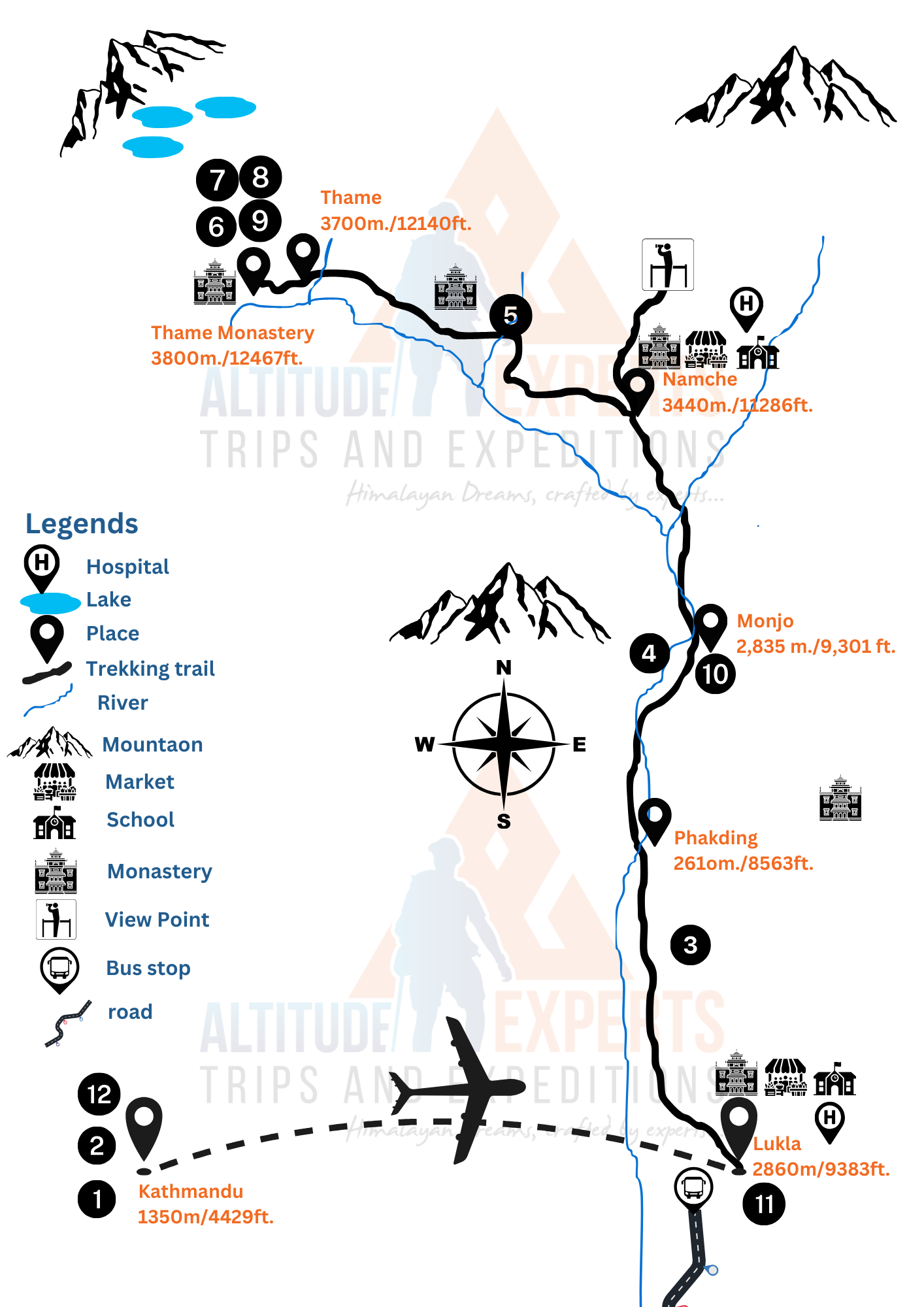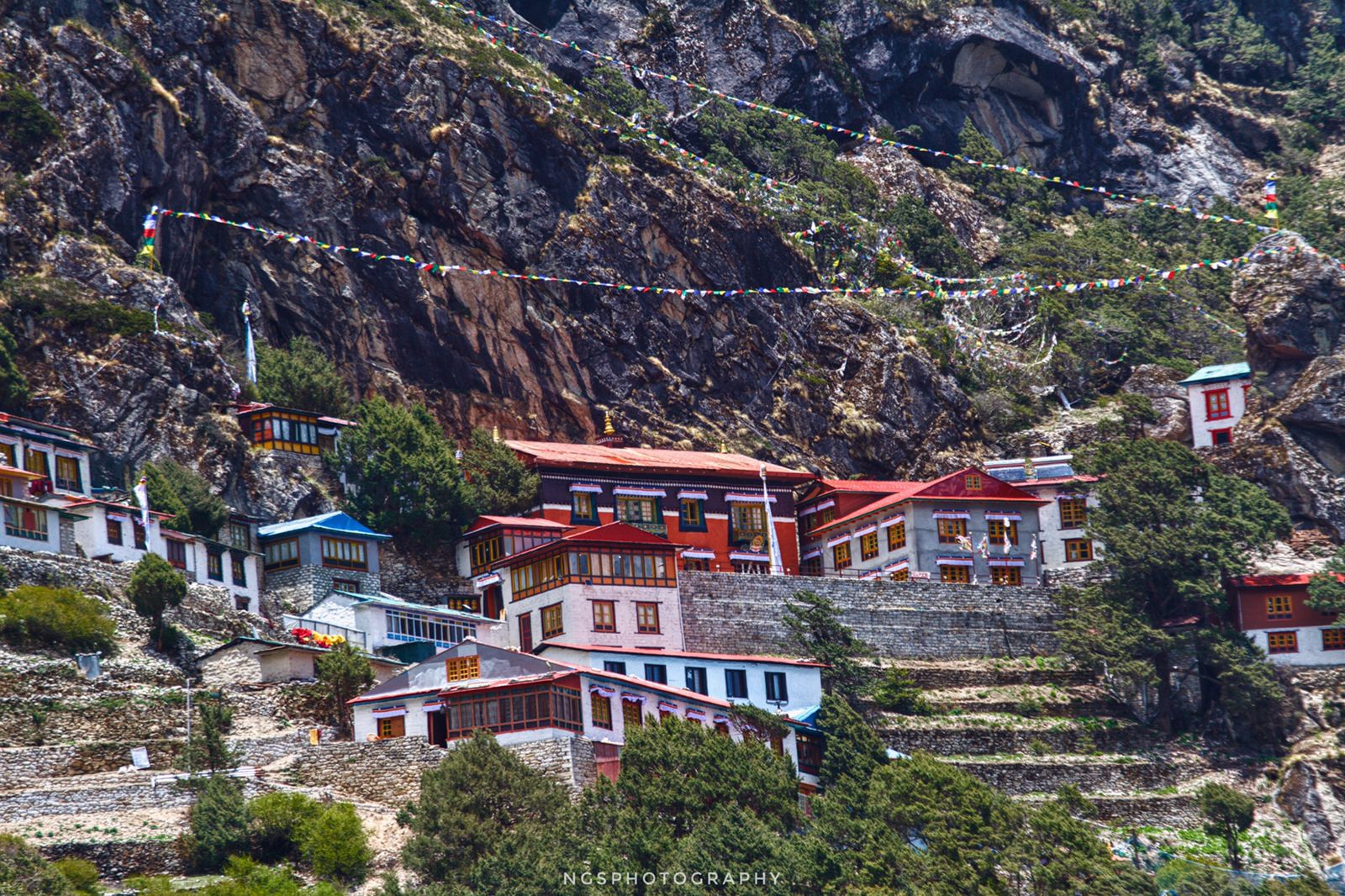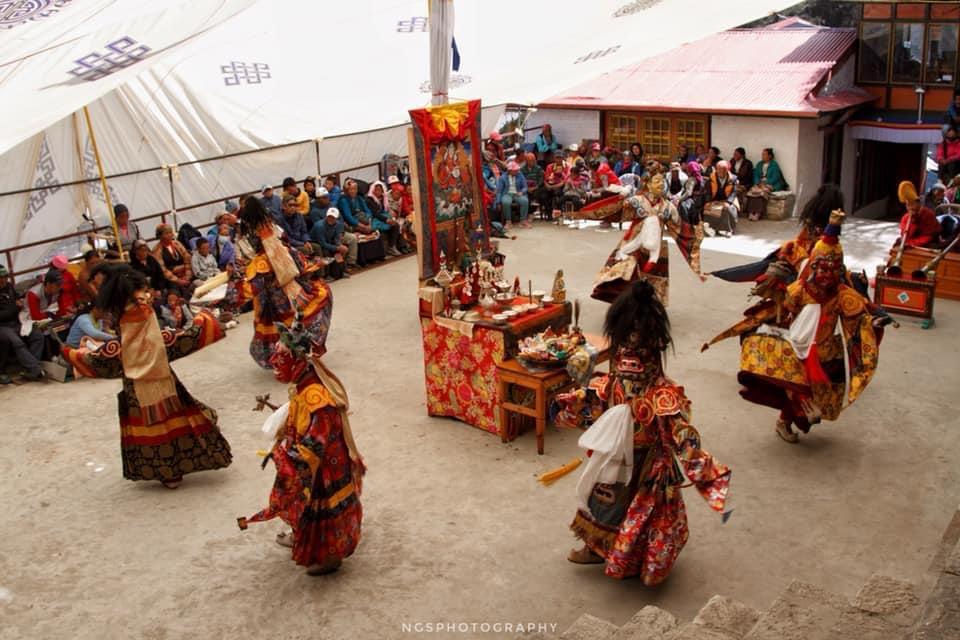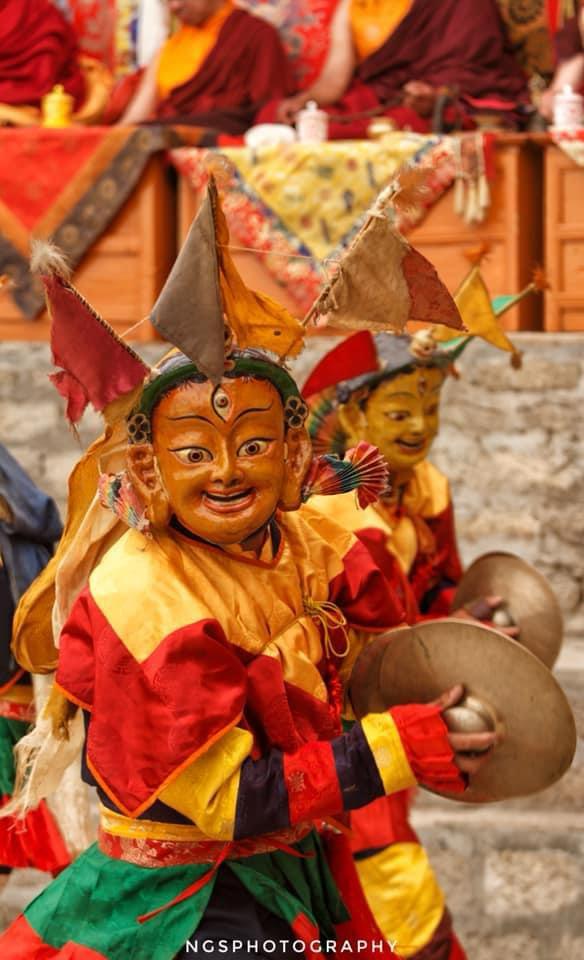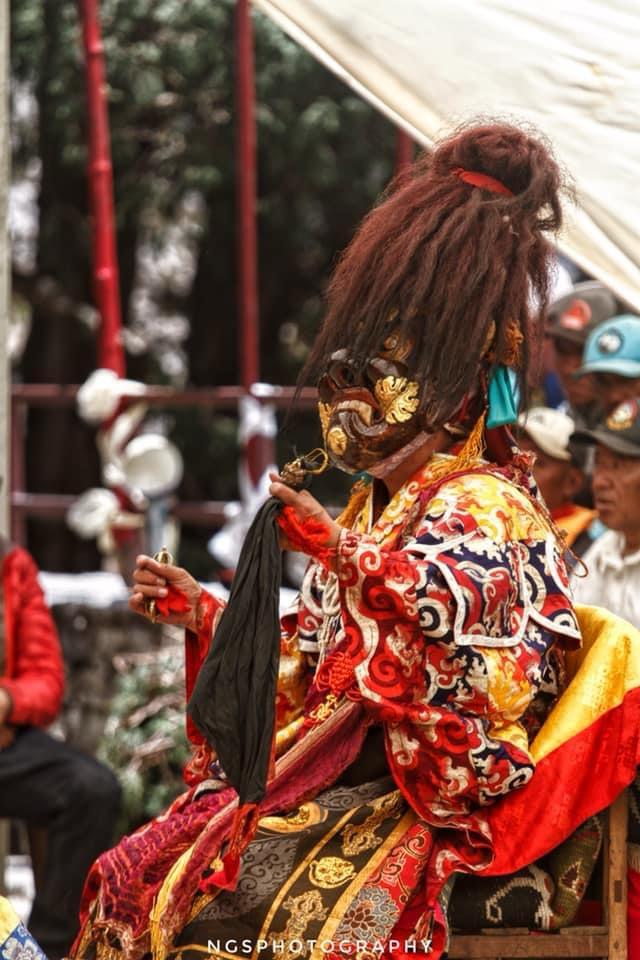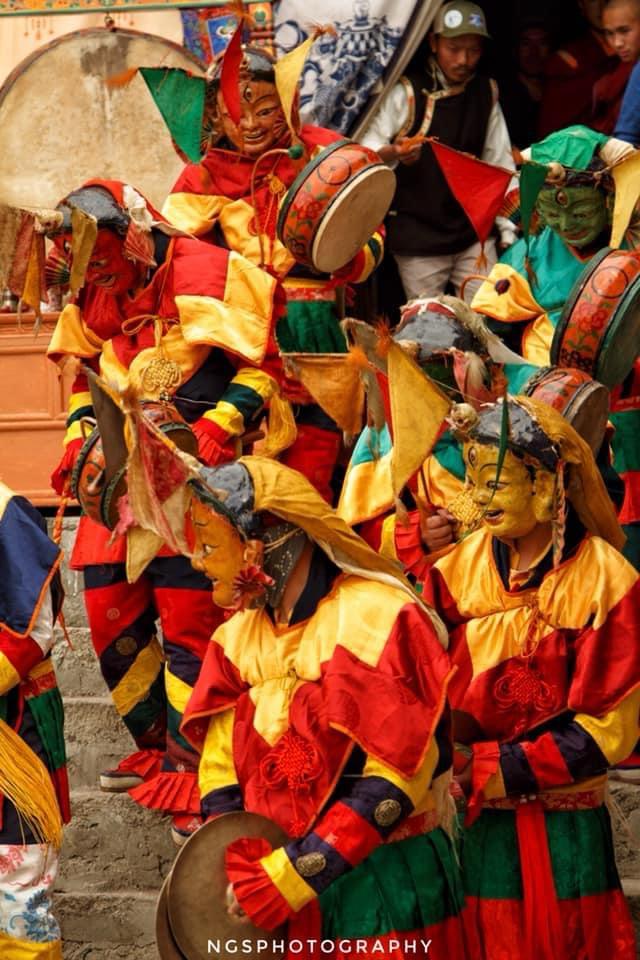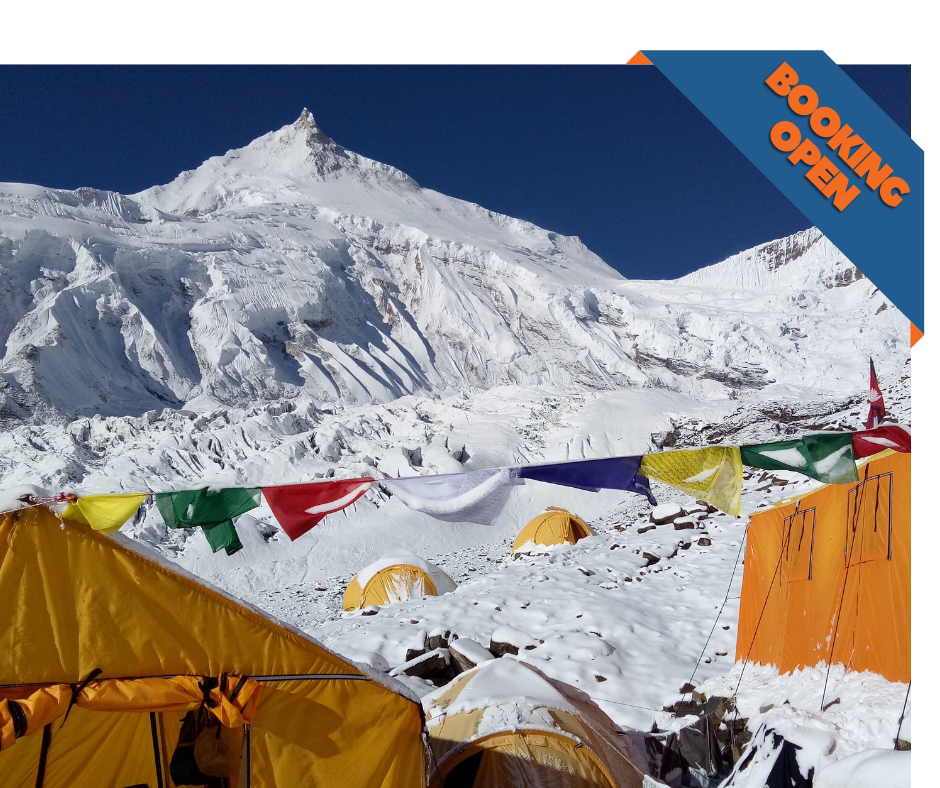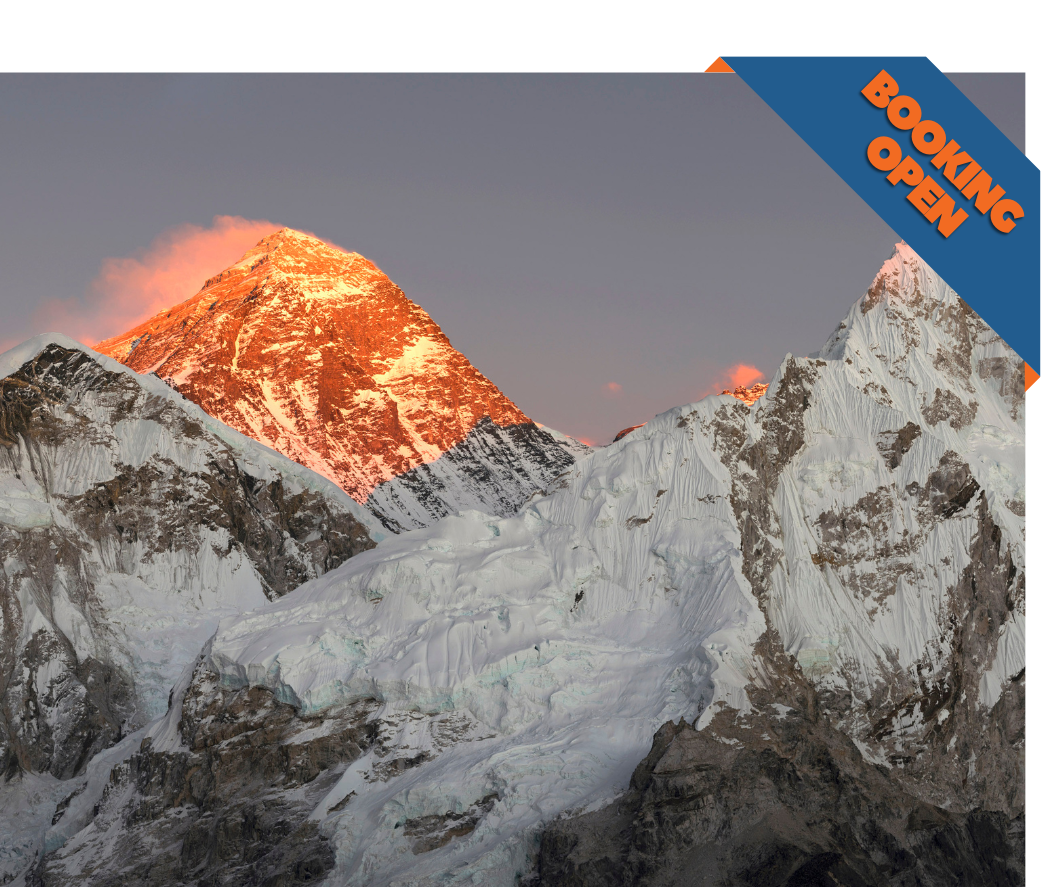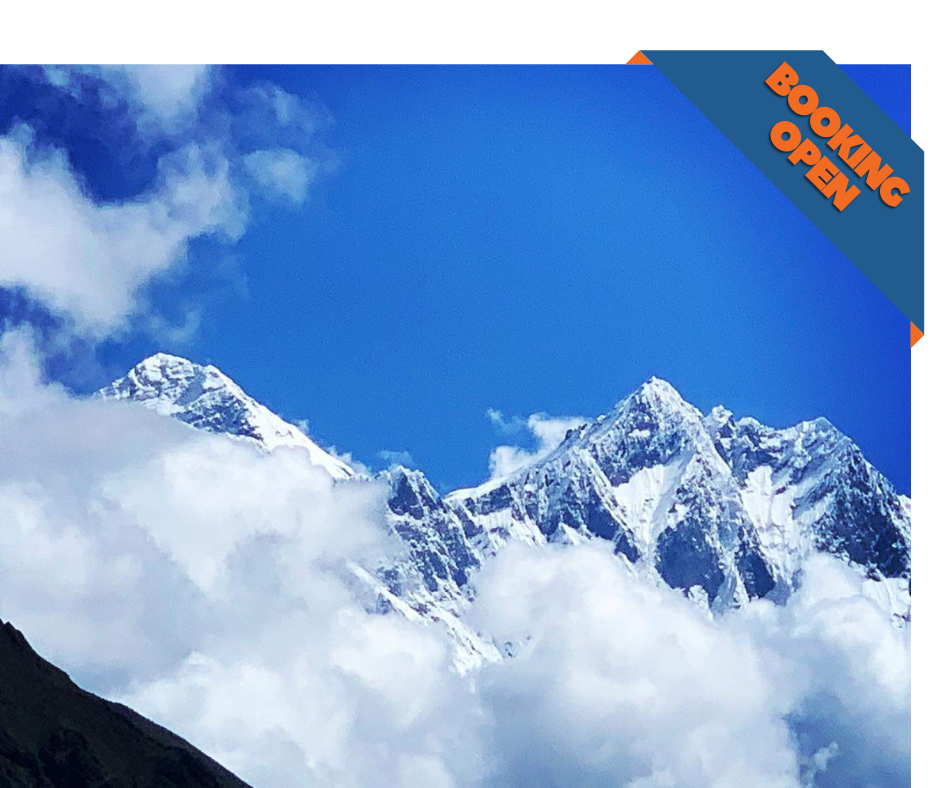Thame Gompa also known as Dechhen Chhokhorling Monastery is located on the southern sloping area of Sumdur Peak and up to Thame Village. It lies in Khumbu Pasanglhamu Rural Municipality of Solukhumbhu district to the Northeast of Kathamandu in Nepal and Tibet, was founded in the early 17th century by Lama Ralwa Dorjee, a distinguished Buddhist practitioner and the middle brother of three great-lama siblings. Lama Sangwa Dorje, another brother, established Pangboche Monastery, while Lama Khenpa Dorje founded Pema Chholing Monastery in Upper Rimijung. Lama Ralwa Dorjee was the middle brother of lama Sangwa Dorji and lama Khempa Dorji. Lama Ralwa Dorjee was a practitioner endowed with great powers and as a sign of accomplishment was able to twist an Iron Rod with his bare hand. The particular Iron is preserved in the main shrine of the monastery and the Rod is displayed during the annual Dumjee festival. Initially, Thame Monastery was a small hermitage with a temple, serving as a gathering place for lay practitioners from nearby villages to perform rituals and receive teachings. Under the guidance of Trulshik Rimpoche, it later transformed into a monastic institution, where over 30 monks now reside, studying the Nyingma teachings of Tibetan Buddhism. The monastery observes various festivals and rituals annually based on the lunar calendar.
Mani-Rildup/ Mani-Rimdu festival
Thame monastery annually hosts several religious festivals. Among them, the Manirimdu/ Manirildup festival is one of the most famous and important festivals in the region. “Manirimdu” and “Manirildup” are terms that relate to the rituals and practices surrounding the blessings given during the festival dedicated to Chenreyzig where “Mani” refers to the mantra associated with Chenreyzig, which embodies the essence of compassion. Chanting this mantra is a central practice in Tibetan Buddhism and is believed to invoke the qualities of the Compassion Buddha, and “Rimdu or Roldup” refers to small red pills known as Rilbu, which are blessed during the festival. The pills are consecrated through repeated rituals and prayers, symbolizing the blessings and compassion of Chenreyzig. During the festival, which is often celebrated at Ong (Blessing Day), these blessed pills are distributed to attendees as a means of sharing the blessings and spiritual merit generated during the ceremonies. In Thame monastery, the festival is held during the fourth lunar month of the Tibetan calendar corresponding to May and June of the Gregorian calendar. It falls at the end of the spring season of the Everest expedition. The festival which lasts for 19 days the religious festival involves ceremonies and meditation (DRUPCHEN).
The festival is a tradition passed on from The Mother Monastery to RONGBUK MONASTERY in Tibet. It begins with an elaborate depiction of the Kilkhor (Mandala) Diagram made with colored sand. This sand is extracted from a specified place and Holly places. After the mandala is drawn, it is covered and taken to the central chanting room. The 1st and 2nd day of the festival is for preparation and making different structures from Rice and flour, called Torma and Gyanthak. From the third day, the offering and puja ceremony begins till 9th day. On the 9th day, Chamgyuk, or pre-practice dance takes place. The 10th day is the most important day of the festival. Today locals from the region gathered at the Monastery to get a blessing from the Rimpoche, the head lama of the monastery. The mask dance takes place on the 11th day of the festival. On this day, Monks performed various mask dances by showing different mudras and acts of Gods and Goddes.
The mask dance starts with monks' hand skills the local name called RwolChham and after that, the monks pray Rewosangcho for good luck and then they start the mask dance for the whole day.
The mask dance serial starts from here:
1. Rolcham
2. Serkem
3. Khing
4. Dorji Thrilbu
5. Ngacham
6. MeTseRing
7. ThurTak
8.GonCham
9. Menak
10. Shalungnga
11. Khangdroma
12. Tokden
13. Lhakma
14. Thikcham
15. Sur Chaam
16. Lokchaam
On the 12th day, the fire puja known as Jingsyak is performed under the leadership of the head Lama of the Monastery.
Join us on your Dream Adventure to Thame Monastery Manirildup Trek with the Experts! Get in Touch!

